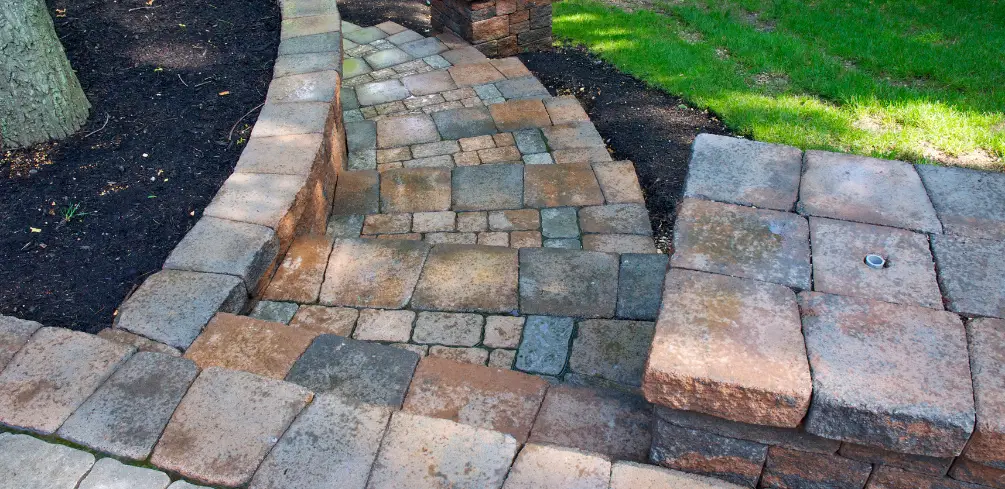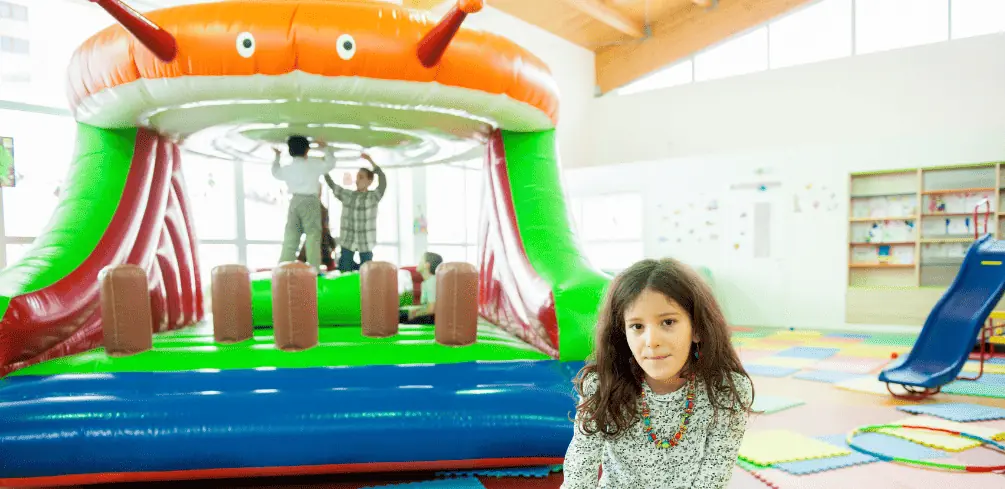You’re about to embark on a landscaping project, and you’ve come across the term ‘pavers,’ but what exactly are they made from?
This article is here to help you understand the diverse range of materials that these versatile building blocks can be composed of. The world of pavers is more varied than you might think – from classic brick and concrete options to luxurious natural stone, eco-friendly rubber, and even modern porcelain.
Each material has unique properties that lend themselves to different applications, aesthetics, and budgets.
Concrete: A Versatile Option

You’ll find that concrete isn’t just a durable material—it’s also incredibly versatile, making it a top-notch choice for pavers. Concrete durability is primarily owed to its inherent strength and resistance to environmental elements.
Its structural integrity allows it to withstand weight and pressure without cracking or deforming, even in extreme weather conditions.
Additionally, the composition of concrete—cement, aggregate, and water—creates a robust matrix that can endure wear and tear over time. You may notice that concrete pavers rarely show signs of aging or damage due to their high resilience.
The versatility of concrete extends beyond its physical properties—it offers an array of aesthetic options as well.
Color options are virtually limitless with concrete; you can choose from a broad palette ranging from earth tones such as browns and greens to more striking shades like blues and reds.
The colorant is mixed directly into the wet concrete before the paver is formed, ensuring uniformity throughout the entire piece rather than merely on the surface level.
This means even if your pavers chip or scratch over time, they will maintain their original color beneath any superficial marks.
But let’s delve deeper into another advantage: customization. Concrete allows for endless design possibilities because it can be molded into practically any shape or size while still wet before hardening into an enduring solid form.
This flexibility makes it possible for you to create unique patterns or designs tailored specifically for your outdoor space—a benefit not easily achieved with other paving materials like stone or brick, which are naturally occurring materials, thus having limited shapes available unless manually cut or shaped which may compromise their durability in some cases.
Brick: Traditional Aesthetics
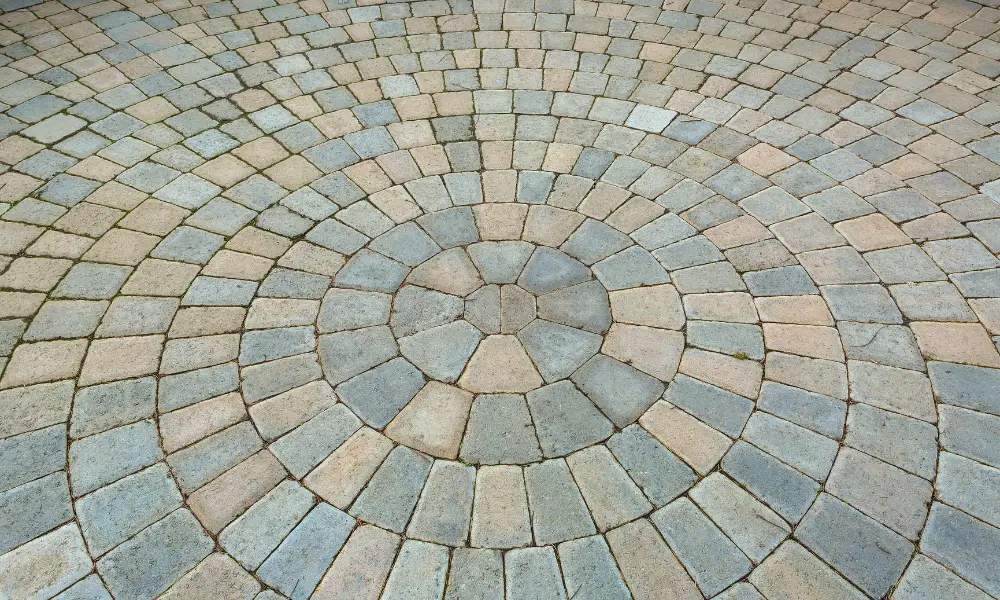
Brick’s timeless charm and durability aren’t just for walls, as they’re commonly used in creating classic, aesthetically pleasing pathways too.
Brick pavers offer a sense of traditional aesthetics that few other materials can match. The rich, warm tones and the unique texture of brick add to its appeal.
Moreover, brick longevity is something you can count on; these sturdy beauties can withstand harsh weather conditions and heavy foot traffic with minimal wear.
Unlike concrete or stone pavers which may crack under intense pressure or extreme temperatures, bricks maintain their structural integrity for decades.
When it comes to design flexibility, bricks offer a plethora of color varieties that transcend beyond the usual reds and browns. You will find them in shades ranging from nearly white to deep burgundy:
Subtle Variations
- Lighter Shaded Bricks: These are typically cream or buff-colored, offering an understated elegance to your outdoor spaces.
- Medium-Toned Bricks: They usually come in traditional reds and oranges, adding warmth and richness.
Bold Contrasts
- Darker-Hued Bricks: These are often found in dark brown or burgundy hues providing a bold backdrop against green landscapes.
- Multi-Colored Bricks: If you want more visual interest, opt for multi-colored ones; they seamlessly blend various shades on each brick.
Understanding how these color options work with your surrounding landscape is key when selecting the right brick paver for your project.
Remember that lighter colors will reflect more sunlight while darker ones absorb it – so consider the climate where you live before making a decision.
One added advantage of using bricks is their eco-friendly nature, as they’re made from naturally occurring clay soil baked at high temperatures minimizing environmental impact.
Moreover, if properly maintained, bricks could potentially last forever making them not only visually appealing but also practically valuable additions to any property!
Natural Stone: For a Luxurious Look
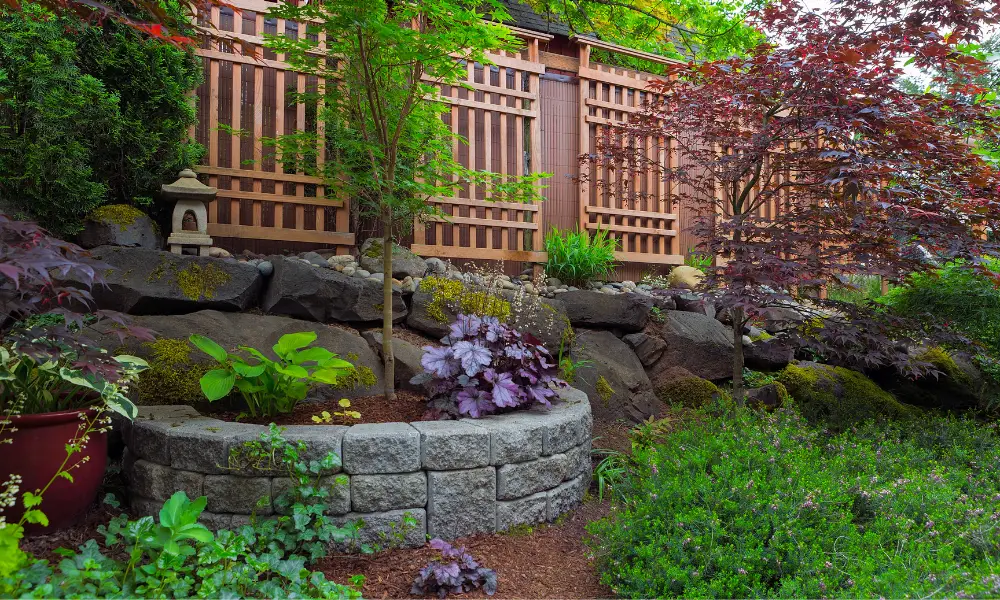
If you’re after a luxurious and sophisticated vibe, natural stone is the way to go. Natural stone pavers are typically made from marble, granite, slate, limestone, or travertine – each with unique properties that contribute to durability and aesthetic appeal.
Marble is known for its classic elegance and timeless beauty, while granite boasts superior strength and resistance to damage due to its dense, non-porous nature.
Slate offers a more rustic charm with its rough texture and rich color variations. Limestone exudes a refined old-world charm, available in muted earth tones that effortlessly blend into any landscape design.
A key factor when choosing between these materials is understanding the different impacts of stone sourcing. The extraction process of these stones can have significant environmental implications due to energy consumption, water usage, and emissions associated with quarrying activities.
For instance, mining granite requires extensive blasting, which can lead to habitat destruction and soil erosion. On the other hand, sourcing marble involves less invasive techniques but still results in considerable waste production due to high reject rates during cutting operations.
While both marble and granite offer exceptional durability under various conditions, they do differ significantly in terms of maintenance requirements and cost-effectiveness.
Granite’s natural hardness makes it resistant to scratches, making it an ideal choice if you anticipate heavy foot traffic on your pavers or if you’re seeking longevity without much maintenance hassle.
In contrast, marble’s softer composition makes it susceptible to etching from acidic substances, but this susceptibility can be mitigated through sealing treatments applied periodically over time.
This means although initially cheaper than granite; marble may require higher long-term investment for upkeep purposes depending on your local climate conditions as well as usage patterns.
Rubber: An Eco-friendly Alternative
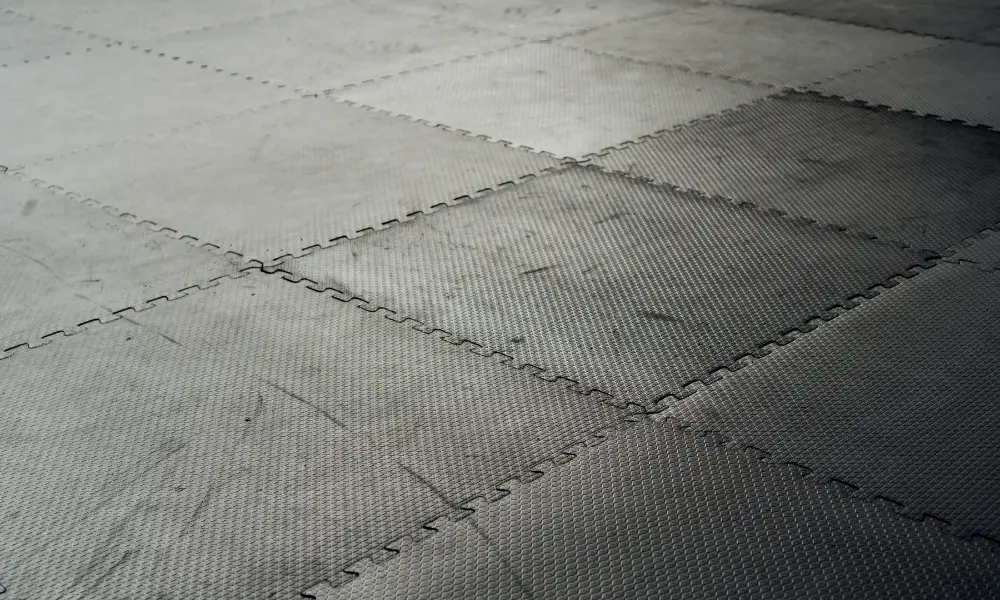
Switching gears, let’s dive into the world of rubber – an eco-friendly alternative that’s not only durable but also easy on your wallet.
Rubber pavers are created from recycled tires and other rubber materials, making them an excellent choice for sustainability-minded consumers.
The process involves shredding these discarded materials into small particles, which are then fused together under high pressure and heat to form a dense, durable product. This recycling method is not only cost-effective but also helps reduce landfill waste significantly.
Let’s delve deeper into the benefits of using this unique material:
- Durability: Unlike traditional concrete or stone pavers, rubber is inherently flexible and resilient. This quality lends itself well to withstand heavy traffic, weather elements, and sudden impacts without cracking or chipping.
- Recycling Process: The sourcing methods of rubber involve recycling old tires that would otherwise end up in landfills. It’s a win-win situation where you get high-quality pavers while contributing positively towards environmental conservation.
- Low Maintenance: These pavers require minimal upkeep due to their resistance against mold, mildew growth, and staining.
- Comfort & Safety: They offer a superior cushioning effect which reduces fatigue during prolonged standing or walking; moreover, their slip-resistant nature increases safety, especially in wet conditions.
While it might be tempting to think that all these features come with a hefty price tag attached, you’ll be pleasantly surprised to know how affordable rubber pavers can be compared to their stone or brick counterparts – thanks largely due to the efficient recycling process used in creating them!
Not just this; they’re relatively straightforward when it comes to installation too!
A simple interlocking system allows homeowners with even modest DIY skills to lay out a new pathway or patio over a weekend without requiring professional help.
So why not give rubber paving consideration for your next outdoor project?
With its strong emphasis on sustainability combined with cost-effectiveness and performance characteristics such as durability and low maintenance needs – it really does tick all the boxes for modern landscaping requirements!
And remember: each time you choose recycled rubber pavers over conventional alternatives – you’re playing your part in reducing waste and promoting responsible resource usage!
Porcelain: Modern and Durable
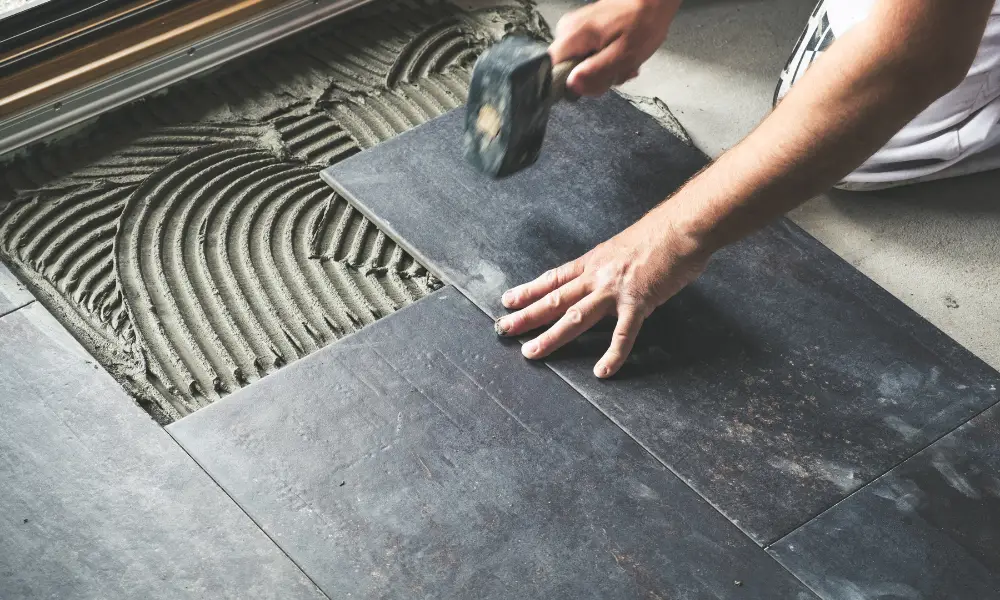
Have you ever considered porcelain for your outdoor spaces?
You might be surprised by the modern and durable qualities this material can bring to your landscaping projects.
Porcelain, a type of ceramic that is fired at high temperatures, is an excellent choice for pavers due to its exceptional strength and durability. Unlike other materials, porcelain doesn’t absorb water or suffer from freeze-thaw cycles, making it resilient in all weather conditions.
It’s not just about durability, though; when it comes to modern aesthetics, porcelain truly stands out.
| Benefits | Description |
|---|---|
| Durability | Porcelain offers a wide array of design possibilities with varied colors, patterns, and textures for a contemporary look. |
| Water Resistance | These pavers don’t absorb water, preventing damage caused by freezing and thawing. |
| Easy Maintenance | Due to their non-porous surface, they are resistant to staining and require minimal upkeep. |
| Aesthetic Appeal | As they’re made from natural materials like clay, feldspar, and quartz sand, they’re environmentally friendly compared to other options. |
| Eco-friendly | As they’re made from natural materials like clay, feldspar and quartz sand, they’re environmentally friendly compared to other options. |
Now let’s explore deeper into these attributes offered by porcelain pavers.
The hardiness that we mentioned earlier stems from the manufacturing process where extremely high temperatures create a dense material with low porosity levels – this equates directly to ‘Porcelain Durability.’
Furthermore, if you yearn for Modern Aesthetics in your outdoor spaces without sacrificing practicality, then porcelain should be on top of your list!
Its sleek appearance combined with various color options allows you to tailor it exactly according to your design preferences, whether that would be a minimalist white or rustic brick imitation.
It’s worth noting that using such robust material as porcelain ensures longevity in harsh climates while maintaining its visual appeal intact – no more worries about fading colors or deteriorating quality over time!
This also means less maintenance work required, which saves both money and effort on your part – who wouldn’t want that?
With these benefits coupled together – the striking blend of resilience against natural elements along with an attractive finish – one can see why many homeowners opt for this versatile option when considering paving solutions.
Take advantage of these inherent properties next time you’re working on a landscaping project and witness firsthand how it transforms the space around you!
Conclusion
As a homeowner, you’ve got a plethora of options when it comes to choosing the right paver material. Whether it’s the versatility of concrete, the traditional aesthetics of brick, the luxury of natural stone, the eco-friendliness of rubber, or the modern durability porcelain offers, there’s something tailored for every taste and requirement.
Imagine strolling along a beautifully crafted walkway made from cobblestone-like concrete pavers – not only is it durable, but it also adds an old-world charm to your property.
It’s essential to understand that each material has its own unique properties and benefits. The choice should be guided by factors such as climatic conditions, usage frequency, aesthetic preferences, and budget constraints.
For instance, if you’re in a region with heavy rainfall and frequent freeze-thaw cycles, then opting for porcelain might be beneficial due to its high resistance against weathering.
Make an informed decision; after all, these pavers are more than just stones – they’re foundational elements adding value to your home.

